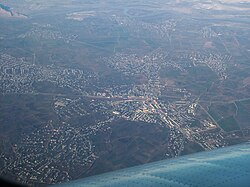This article needs additional citations for verification .(January 2017) |

This is a list of cities in Azerbaijan. Azerbaijan is a country in the South Caucasus region, situated at the crossroads of Southwest Asia and Southeastern Europe. [1] As of 2013, Azerbaijan has 78 cities, including 10 cities of republican subordination, 67 district-level cities, and 1 special legal status city. These are followed by 260 urban-type settlements and 4,252 villages. [2]


















